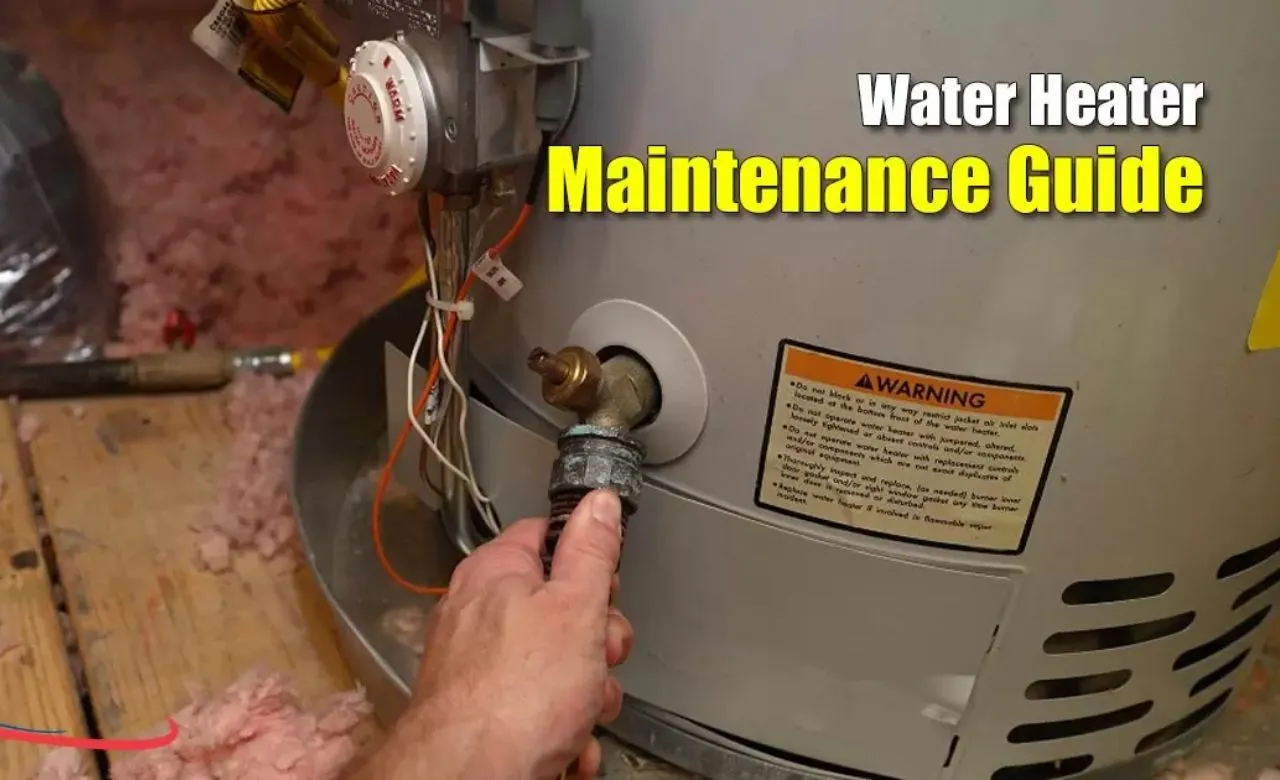Water Heater Maintenance: 6 Inexpensive Tips

Keep your water heater running efficiently with professional maintenance services. Click now for reliable Water Heater Maintenance solutions!
Regular maintenance is essential for guaranteeing your water heater’s functionality and lifetime. You may optimize energy efficiency and avoid costly repairs by taking basic procedures like draining the tank to eliminate sediment accumulation, examining and repairing parts as needed, and practicing adequate insulation. This handbook contains important instructions and useful hints for keeping your water heater functioning efficiently. Never underestimate the value of professional aid when it is required, since safety should always be a top priority.
To maintain the performance and lifespan of your water heater, drain and flush the tank on a regular basis to remove sediment accumulation, inspect and replace the anode rod as needed, and ensure correct insulation to improve energy efficiency. Seek expert maintenance services for thorough checks and adjustments.
Reasons Why You must drain Your Water Heater
Your water heater’s tank may accumulate debris over time. The efficiency and lifespan of the heater may be decreased as a result of this sediment, which makes the heater work harder to heat the water. You can get rid of this sediment and increase the usefulness of your water heater by draining it. Additionally, draining your water heater can lower the possibility of leaks, which could result in water damage to your house.
Materials You’ll Need
Before you start draining your water heater, you’ll need a few materials:
- A garden hose
- A bucket
- Pliers or a wrench
- Towels or rags
- Safety goggles
How to Drain Your Water Heater in Steps
Steps to Drain Your Water Heater Now that you have your materials, let’s get started!
- Disconnect the power source
Before beginning to drain your water heater, turn off the electricity to it. If you have an electric water heater, you should shut off the power at the circuit breaker. Close the gas supply valve if your water heater is powered by gas.
- Turn Off the Cold Water Supply
Find the cold water supply valve on your water heater, and shut it off. This valve is normally near the top of the heater and has a lever that may be turned to cut off the water.
- Connect a Hose
After that, join a garden hose to the water heater’s drain valve at the base. The drain valve, which resembles a spigot, is typically found close to the heater’s base.
- Open the Pressure Relief Valve
Open the pressure relief valve to let air into the water heater and keep a vacuum from forming. This valve has a lever that you can lift to open it, and it is typically situated close to the heater’s top.
- Open the Drain Valve
The drain valve on the water heater’s base can be opened by turning the pressure relief valve counterclockwise. ensure that the other end of the garden hose is in a safe place to drain, such as the floor or outside.
- Let the Water Heater Drain
Let the water heater completely drain. This could take anywhere from a few minutes to more than an hour, depending on the size of your tank. The bucket can be used to collect any spilled water.
- Flush the Tank
By re-opening the cold water supply valve after the water has drained, you can flush the tank.
How Often Should You Drain Your Water Heater?
It is recommended that you empty your water heater at least once a year to reduce sediment accumulation and ensure top efficiency. The amount of hot water used by your home, the size of your tank, and the hardness of your water can all influence how frequently you must drain your water heater.
If you notice any signs of sediment building or if it is not running as efficiently as it once did, your water heater may need to be drained more frequently. A licensed plumber should evaluate your water heater on a regular basis to ensure it is in good operating order and to repair any concerns before they escalate.
Tips for Maintaining Your Water Heater some Mistakes to Avoid
The following are some recommendations for maintaining your water heater and some errors to avoid:
- To get rid of sediment buildup, flush your water heater on a regular basis. By doing so, you can keep your unit from corroding and increase its lifespan.
- To make sure the pressure relief valve is operating properly, check it
at least once a year. This valve aids in preventing your water heater from blowing up or overheating.
- Keep clutter and debris away from the area surrounding your water heater. Accessing and caring for your unit will be simpler as a result.
- To avoid scalding and conserve energy, set the temperature on your water heater no higher than 120 degrees Fahrenheit.
- To prevent heat loss and conserve energy, insulate the pipes that surround your water heater.
- Leaks, odd noises, or a lack of hot water are all indications that a water heater isn’t working properly. Prompt action can help avoid pricey replacements or repairs.
Avoid these errors
- Failing to maintain your water heater. To avoid breakdowns and increase the lifespan of your unit, regular maintenance is crucial.
- Ignoring the symptoms of a broken water heater. Early problem-solving can ultimately save you time and money.
- Attempting to do your own water heater maintenance or replacement. It’s best to let professionals handle repairs and replacements of water heaters because they can be dangerous if not handled properly.
FAQs
Why is water heater maintenance important?
Regular water heater maintenance is crucial to ensure optimal performance, prevent malfunctions, extend the lifespan of the unit, and maximize energy efficiency.
How often should I schedule water heater maintenance?
It is recommended to schedule water heater maintenance at least once a year to catch any potential issues early and keep your unit running smoothly.
What are the signs that my water heater needs maintenance?
Signs that your water heater needs maintenance include inconsistent hot water, strange noises, leaks, rusty water, or a decrease in water temperature.
Conclusion
In conclusion, regular maintenance is necessary to ensure that your water heater operates effectively, avoids breakdowns, and has a long lifespan. Important maintenance procedures include flushing your water heater frequently, checking the pressure relief valve, keeping the area around it clear, setting the temperature to no higher than 120 degrees Fahrenheit, and insulating your water heater and pipes.
Furthermore, it’s crucial to act quickly and not ignore warning signs of a broken water heater. Water heaters can be dangerous if not handled properly, so it is best to leave repairs and replacements to a professional. You can ensure that your water heater operates smoothly and effectively for many years to come by paying attention to these suggestions and avoiding these blunders.

